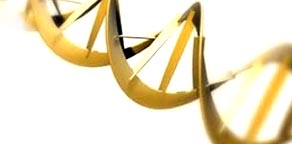On behalf of the staff of the National Science Teachers Association (NSTA) and the many dedicated members of our leadership team, I would like to welcome and thank the following members of our Board, Council, Standing Committees, Advisory Boards, and Panels whose terms of appointment began on June 1, 2013. With the renewed national focus on STEM education and the release of the Next Generation Science Standards, this year will be an exciting time to be a leader in science education. I am delighted to have you all as my colleagues on this journey. The theme of my presidency is “Building and Sustaining Teacher Leadership in Science, Standards, and Literacy” and I know that with the talents and commitment you bring to the table, we will be able to achieve great things. So, to all of you on the list below, I say “Welcome” and I look forward to working with you!
NSTA members who are interested in volunteering for a position on one our committees, advisory boards, or review panels can find more information at www.nsta.org/involved/default.aspx#committees.
—Bill Badders, NSTA President, 2013–2014
Board of Directors
Sally Harms, College Division Director
Kelly Price, Coordination & Supervision Director
Beverly DeVore-Wedding, High School Division Director
Council
Stephanie Wright, District III
Donna Governor, District V
Mary Colson, District IX
Paul Adams, District XI
Timothy Maze, District XV
Steven Ruthford, District XVII
STANDING COMMITTEES
College
Christie Orlosky, Greensburg, PA
Cindi Smith-Walters, Murfreesboro, TN
Sarah Hanes, Towson, MD
Coordination and Supervision
Kirsten Smith, Denton, NE
Matthew Stolz, Grand Rapids, MI
Christopher Duvall, Morristown, NJ
David Miller, Las Vegas, NV
High School
Karen Higuera, West Monroe, LA
Sharla Dowding, New Castle, WY
Brian Olsen, Enfield, CT
Informal
Stacey Glatz, Powell, OH
Miriam Musco, Ithaca, NY
Kelly Riedinger, Wilmington, NC
Eileen Tramontana, DeLeon Springs, FL
Karn Maher, Juneau, AK
Gary Sampson, Waukesha, WI
Middle Level
John Milam, University Heights, OH
Shannon Hudson, Crawfordsville, IN
Douglas Stith, Londonderry, NH
David Pettit, Livingston, MT
Multicultural/Equity
Margaret Carter, Wapato, WA
Jerry Valadez, Fresno, CA
S. Maxwell Hines, Winston-Salem, NC
Preschool-Elementary
Connie Crittenden, East Lansing, MI
Jessica Fries-Gaither, Hilliard, OH
Jessie Kelly, Snellville, GA
Preservice Teacher Preparation
Eric Brunsell, Oshkosh, WI
Michael Troop, Chicago, IL
Chris Ohana, Bellingham, WA
Professional Development
Julie Luft, Athens, GA
Eric Walters, Staten Island, NY
Christopher Soldat, Iowa City, IA
Research
Pamela Auburn, Houston, TX
Lise Whitfield, Seattle, WA
Anne Schoeffler, Hudson, OH
Audit
Peter McLaren, Providence, RI
Awards and Recognition
Karen Nesbit, Franklin, WI
Jennifer Pritchard, Seattle, WA
Pat Shane, Chapel Hill, NC
James Puckett, Grand View, MO
Budget and Finance
Patricia Simmons, Raleigh, NC
Christine Royce, Newburg, PA
Nominations
Debra Boris Nygard, Ramsey, MN
Hector Ibarra, Iowa City, IA
Linda Lacy, Excelsior Springs, MO
Herb Brunkhorst, Riverside, CA
Elizabeth Mulkerrin, Omaha, NE
ADVISORY BOARDS
Aerospace
Pam Evans, Charleston, IL
David Black, Provo, UT
Caroline d’Otreppe , Windsor Locks, CT
Richard Varner, Catonsville, MD
Conference
Cynthia Willingham, Vestavia Hills, AL
Development
Jean Tushie, Eden Prairie, MN
Susan Koba, Omaha, NE
International
Teresa Kennedy, Tyler TX
Kathleen Horstmeyer, Chester, CT
Edralin Pagarigan, Rosedale, MD
Catherine Bale, West Point, NY
Investment
John Penick, Miami, FL
Patricia Simmons, Raleigh, NC
Journal of College Science Teaching
Brian Schmaefsky, Kingswood, TX
Barry Thompson, Evans, GA
Megan Litster, LaCrosse, WI
NSTA Reports
Barbara Tharp, Houston, TX
Mike Szydlowski, Columbia, MO
Wayne Snyder, Glendora, CA
Retired Members
Joyce Gleason, Punta Gorda, FL
Susan Clay, Parma, OH
Deb Wickerham, Findlay, OH
Ed LinzSpringfield, VA
Science & Children
Terri Hebert, South Bend, IN
Neporcha Cone, Kennesaw, GA
Wendy Frazier, Fairfax, VA
Science Matters
Stephan Bartlett, Fairfax, VA
Jean May-Brett, Baton Rouge, LA
Michelle Brand-Buchanan, Conway, AR
Science Safety
Beverly DeVore-Wedding, Meeker, CO
Lesa Rae, Leesburg, FL
Brian Wazlaw, Portsmouth, NH
Science Scope
Karen Matsler, Arlington, TX
Ella Bowling, Maysville, KY
Kelly Chaney, Little Rock, AR
Special Needs
Cheryl White, Round Rock, TX
Melissa Sleeper, Vera Beach, FL
Jennifer Purcell Coleman, Fayetteville, AR
Technology
Ben Smith, York, PA
Stephen Bock, Fresno, CA
Gregory Benedis-Grab, New York, NY
The Science Teacher
Stephen Bartos, Chicago, IL
Carrie Jones, Raleigh, NC
Michael Brinkman, Grand Prairie, TX
Urban Science
Trudy Giasi, Columbus, OH
Selina Bartels, Chicago, IL
Michael Harms, San Francisco, CA
PANELS
NSTA/CBC Review
Karen Ansberry, Lebanon, OH
Delene Hoffner, Colorado Springs, CO
Linda Schoen-Giddings, Columbia, SC
New Science Teachers Academy
Robin Curtis, Williamsburg, VA
Michael Lowry, Chattanooga, TN
John Clark, Deltona, FL
Shell Science Teaching Award Judging
Ruth Ruud, Cleveland, OH
Tamica Stubbs, Charlotte, NC


 At the NSTA conference this spring, I stopped by the booth sponsored by the Royal Society of Chemistry. They were promoting their newest project:
At the NSTA conference this spring, I stopped by the booth sponsored by the Royal Society of Chemistry. They were promoting their newest project:  My mentee just finished his first year as an elementary teacher. I’d like to give him some suggestions for how to reflect on his experiences and plan for next year.
My mentee just finished his first year as an elementary teacher. I’d like to give him some suggestions for how to reflect on his experiences and plan for next year. 

